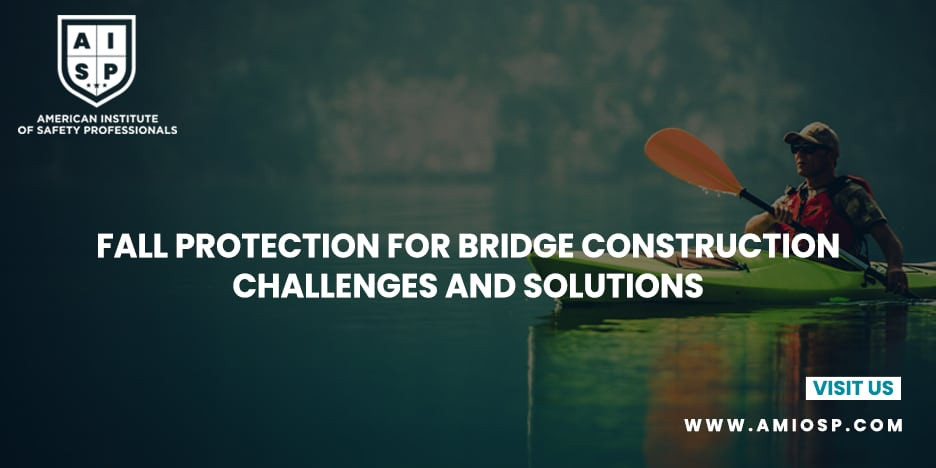Introduction
Bridge construction is a complex and demanding process that
involves a multitude of challenges. One of the most critical aspects of bridge
construction is ensuring the safety of workers, particularly when it comes to
fall protection. Falls from heights are one of the leading causes of injuries
and fatalities in the construction industry, and bridge construction presents
unique challenges in this regard. This blog post will explore the challenges
associated with fall protection in bridge construction and provide effective
solutions to mitigate these risks.
Understanding the Challenges
- Height
and Accessibility: Bridge construction often involves working at
significant heights, which increases the risk of falls. Accessing these
heights safely is a major challenge, as traditional methods such as
ladders and scaffolding may not be feasible or practical for certain
bridge configurations. Workers need to navigate narrow walkways, uneven
surfaces, and confined spaces while carrying out their tasks.
- Structural
Constraints: Bridges have intricate structural elements that can hinder
the installation of traditional fall protection systems. These include
arches, piers, cables, and steel girders. Finding suitable anchorage
points for safety harnesses and lifelines can be difficult, and the
presence of overhead obstructions further complicates the installation of
fall protection systems.
- Environmental
Factors: Bridge construction often takes place in challenging
environmental conditions, such as high winds, extreme temperatures, or
exposure to water. These factors can affect the stability of workers and
the effectiveness of fall protection systems. It is essential to consider
weather conditions and their impact on worker safety during all stages of
bridge construction.
Effective Solutions
- Comprehensive
Risk Assessment: Before starting any bridge construction project, a
thorough risk assessment must be conducted to identify potential fall hazards.
This assessment should take into account the specific characteristics of
the bridge, including its height, design, and surrounding environment. By
understanding the risks involved, appropriate fall protection measures can
be implemented.
- Engineered
Fall Protection Systems: Traditional fall protection systems, such as
guardrails and safety nets, may not be suitable for bridge construction
due to structural constraints. Engineered systems, such as temporary
horizontal lifelines and anchor points specifically designed for bridges,
offer more flexibility and adaptability. These systems can be installed to
provide continuous fall protection for workers as they move along the
bridge.
- Portable
and Lightweight Equipment: Considering the challenges of accessibility and
structural constraints, it is crucial to use portable and lightweight fall
protection equipment. This allows workers to easily transport and maneuver
the equipment on the bridge, ensuring quick and efficient installation.
Portable anchor points, self-retracting lifelines, and harnesses with
built-in tool belts are examples of equipment that can enhance mobility
and safety.
- Training
and Awareness: Proper training is essential to ensure workers understand
the risks associated with fall hazards in bridge construction and are
proficient in using fall protection equipment. Training programs should
cover topics such as recognizing fall hazards, selecting and inspecting
equipment, and proper usage of fall protection systems. Ongoing safety
awareness campaigns can reinforce safe practices and help foster a culture
of safety on bridge construction sites.
- Regular
Inspections and Maintenance: Fall protection systems must undergo regular
inspections to ensure their effectiveness and compliance with safety
standards. Additionally, maintenance and repairs should be promptly
carried out to address any issues or damage that may compromise the
system's integrity. Inspections and maintenance should be conducted by
qualified professionals and documented accordingly.
Conclusion
Fall protection in bridge construction presents unique
challenges that require careful planning and implementation of effective
solutions. By understanding the specific risks associated with working at
heights on bridges, and by employing engineered fall protection systems,
portable equipment, comprehensive training, and regular inspections, the safety
of workers can be significantly enhanced. Prioritizing fall protection measures
not only protects the lives and well-being of workers but also contributes to
the successful completion of bridge construction projects.












0 comments
No Comments